- Home
- slideshows
- miscellaneous
- Breville's Barista Express is the best all-in-one, semi-automatic espresso machine you'll find for under $600 - here's everything you need to know
Breville's Barista Express is the best all-in-one, semi-automatic espresso machine you'll find for under $600 - here's everything you need to know
Specs

Setting the grind size
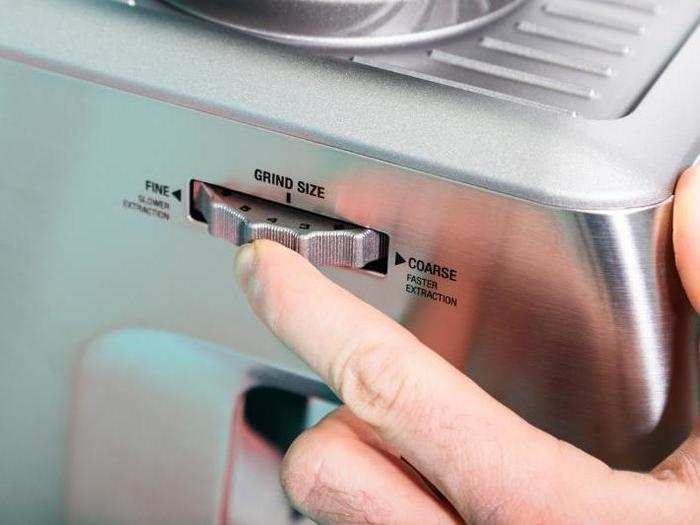
Adjusting the grind size is easy. For a thick, rich, almost sludgy shot, go for a "FINE" grind setting. That said, this is an important step and it could take a while for you to get it to your liking.
My only, if heavily subjective, advice is that I wouldn't go much coarser than "4" or "5". You're getting into drip coffee territory there, and you'll start to get a more watery shot which isn't why you bought an espresso machine. To each our own, though.
Adjusting the grind amount
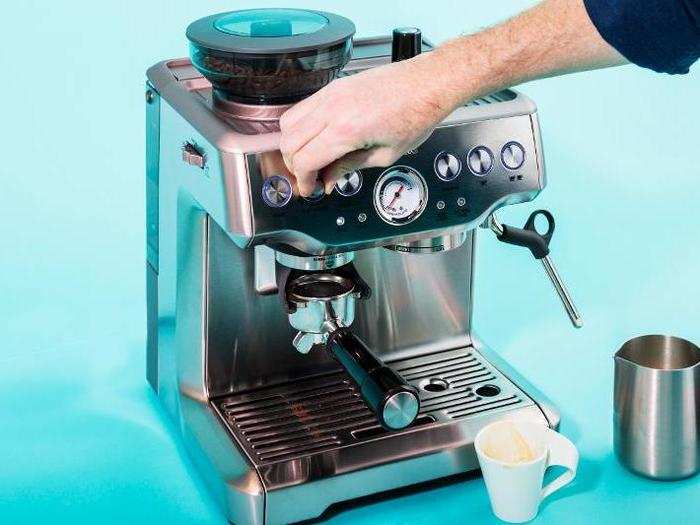
Too much and your portafilter basket overflows. Too little, and, well, we all know that's never a good thing. This isn't numerical, so you'll have to dial it in on your own and keep it there, or remember which little notch in the scale fills the basket. The good news is that there's a button to switch between a single and a double (but you'll still have to account for single-walled and double-walled baskets). More on this later.
Tamping your shot
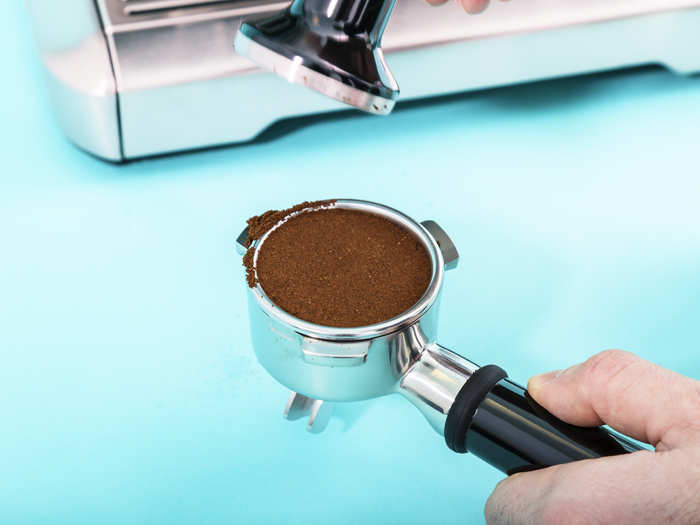
Tamping, first of all, requires a good tamper. The Barista Express comes with a handy and sufficiently weighty one, but it's kept on the light side so that it can slide into its storage space, thanks to a magnet. We gather that if this tamper were any heavier, the magnet wouldn't hold it. All in all, the heavier the tamper, the easier the task becomes (not that it's all that much of a job).
Tidying your tamped shot
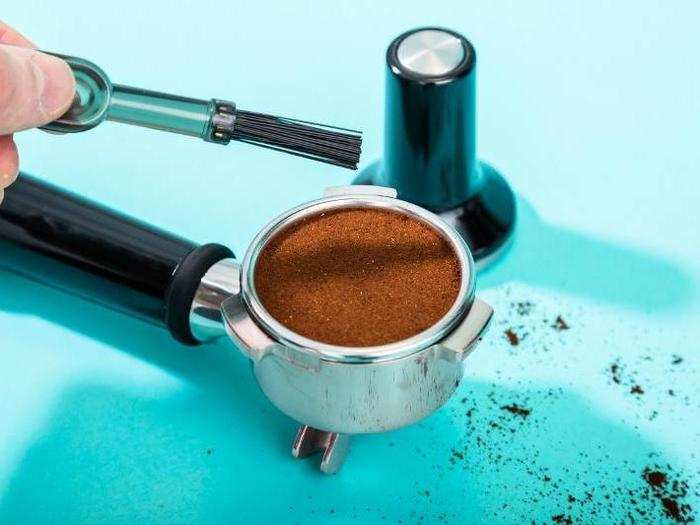
Using this little finesse brush is surprisingly more important than you might expect. It seems like a chore you could probably skip over, but start gunking up your brewing head and you'll soon find that it becomes difficult (if not impossible) to lock your portafilter in place. Then you have to clean it. That's another duty you want to perform as infrequently as possible.
Otherwise, Breville manages to equip you with just about everything you'd need for the Barista. Changeable portafilter baskets (two singles and two doubles, depending on whether or not you're using pre-ground or freshly ground coffee), a finesse brush, a tamper, and the "razor," a trimming tool (not pictured) to measure out perfect shots and discard excess.
Monitoring the pressure gauge
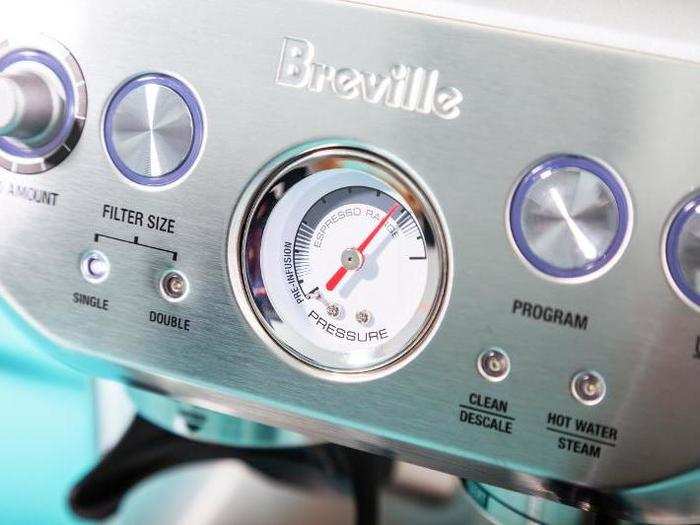
A gauge, apart from offering a classic, nostalgia-inducing aesthetic, is generally a good idea with more powerful machines like this. You'll probably never have to worry, but if something does get jammed and the pressure gets out of control, you'll know to abort, hopefully before it's too late.
Pulling the perfect shot
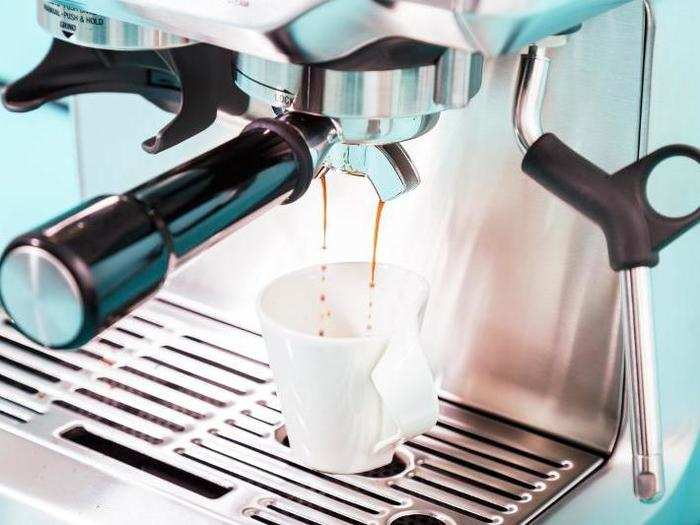
Once you're locked and loaded, select single or double (one espresso cup or two on the machine), and let it (d)rip. There are few prettier sights in this life than watching espresso seep from a portafilter into a demitasse, are there not?
The product, straight up

And what a wicked elixir this thing breweth.
Operating the milk frother
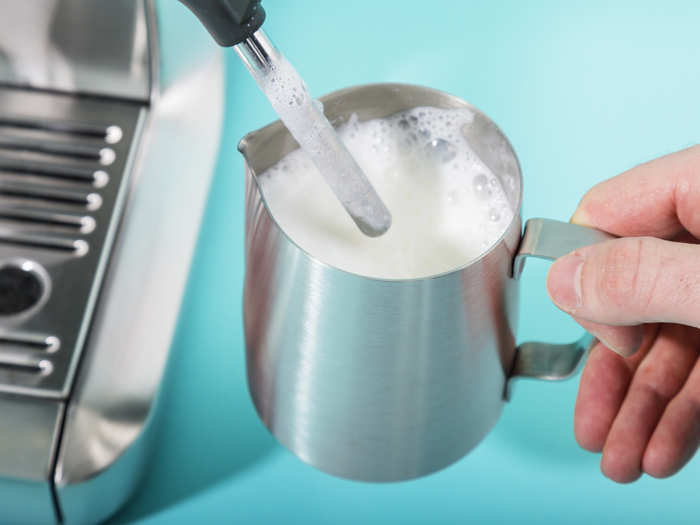
Frothing is easy. Just make sure the machine is primed and the "Hot water/Steam" light is on in front, and then turn the dial on the right side of the machine to steam. Note: Either place the steam wand over the grate or catch any liquid remnants with a cup. You can switch it back to standby once it's spewing out pure steam, then place it in your pitcher (which should have some form of milk in it) and let it rip. Hold it down deep and wait until it approaches the desired thickness (depending on whether you're making a latte or a cappuccino).
Special features

One thing that really sets the Breville Barista Express apart from similar machines is the integrated charcoal filter in the water tank. There are a couple of brands that offer purification tablets, and other things of that sort, but this is the only machine I've come across with a full-on Brita-style filter, and it's popular belief, as with pizza, that good coffee starts with good water.
And, in simple but gracious touch, there's a little numbered wheel atop the filter (like you'd find in or on a Brita) that you can set to the month so you know when it's time to change.
Problems
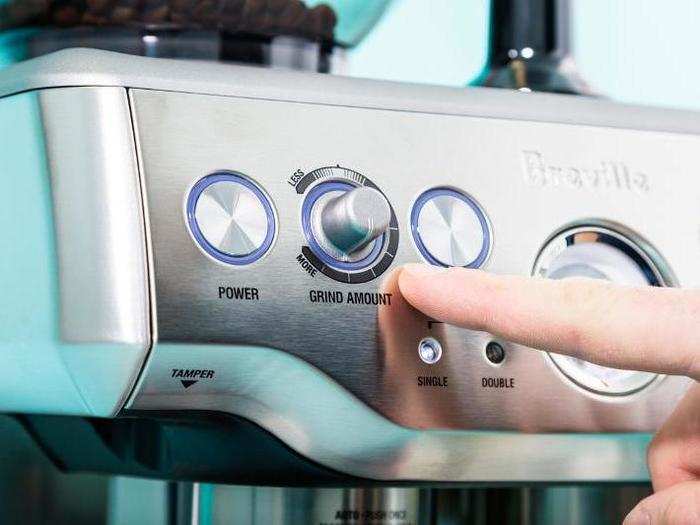
I have but one bone to pick with the Barista Express. Adjusting the grind amount is probably the trickiest thing on the Barista Express. Breville's burr grinders come with an LCD screen that lets you control exactly how many grams of grounds you produce. This dial isn't numerical, and you sort of have to guess (and memorize) what evens out to a single and a double.
How does it measure up?
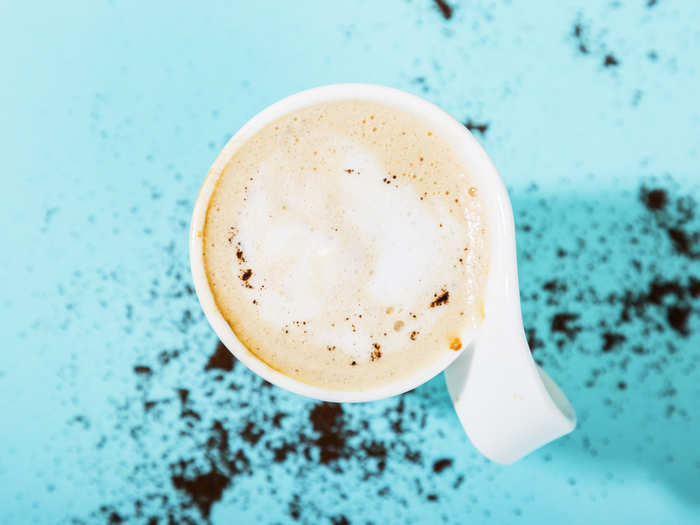
It would be extremely hard to pull a better shot of espresso with any less effort. The Breville Barista Express is among the more user-friendly espresso machines on the market — semi-automatic or otherwise. Full stop. And around the $600 mark, it surely stands alone, for now.
I'm also a big fan of the Gaggia Classic Pro, which is a little more hands-on for those more curious about perfecting their skills, but that also makes it a more temperamental machine (you can break it, but then you can also fix it). The biggest issue with the Gaggia, though, is that it's the same price as the Barista Express but without the built-in burr grinder, which is going to cost you at least $100 for a decent one.
If you really prefer a hands-on experience, check out the La Pavoni Europiccola, but it's a bit pricier and far more finicky (leave this thing on, and you'll be sorry).
Likewise, if you want to get meticulous with your java routine while saving a couple of Benjamins, the Flair Espresso (I recommend the bundle) is a manual device that pulls the best damn shot of espresso I've ever made, but only when I'm on point. It takes some practice, and if you're making espresso for any more than, say, two people, it can really compound into a headache. The pros, however, are not worth ignoring: It's portable, and it requires no electricity (supposing you can acquire hot water otherwise).
And, if you want real espresso but are on a budget, a stovetop is a timeless classic. Bialetti is sort of the household name, but they're using cheap plastic handles these days that work fine until you forget your pot on the stove for a couple of minutes too long, and then you've got to order a fresh one. Grosche makes our favorite, but here's our guide to the best stovetop espresso makers you can buy.
The bottom line
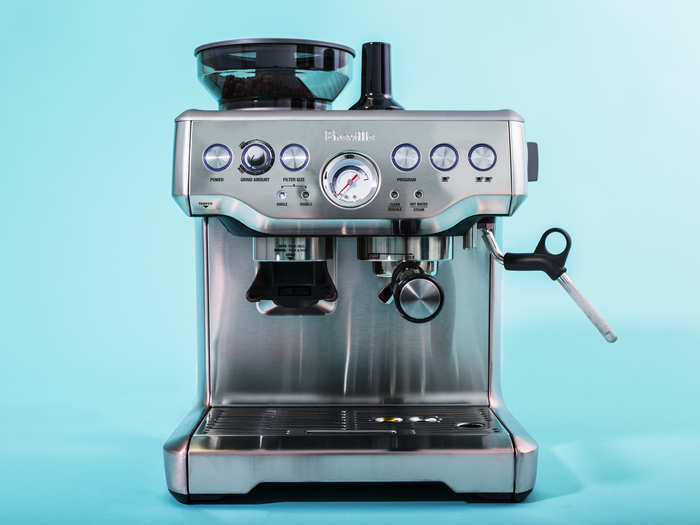
If what you want is a quick but true espresso from a machine that doesn't eat up too much counter space but does it all, the Breville Barista Express is all you'll ever need. The price might be daunting, but if you have a Starbucks or Coffee Bean & Tea Leaf habit that you're committed to kicking, it'll pay for itself within about a year. You'll also find that by the end of that year, you'll be dialing far better drinks than either purveyor.
Pros: All-in-one machine with all high-quality components, almost foolproof
Cons: Harder to fix (replacing the machine is often cheaper), optimizing grounds delivery can be tricky
Buy the Breville Barista Express BES870XL for $583.55 at AmazonCheck out all of our espresso and coffee-related guides
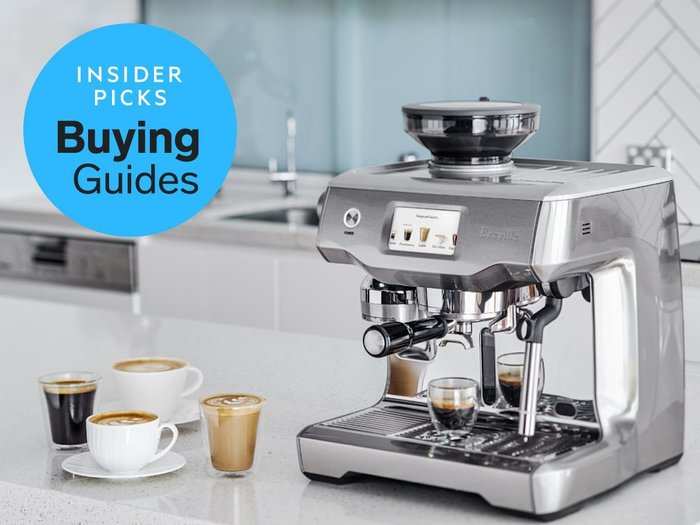
Coffee lovers start out innocently enough with drip filters, French presses, milk frothers, and stovetop espresso makers; but then next thing you know, they're browsing Amazon for full-on espresso machines with all the bells and whistles. If you've reached that stage of coffee addiction, don't worry, we're here for you.
- Best overall: Breville BES870XL Barista Express Espresso Machine
- Best machine for $400: Gaggia Classic Semi-Automatic Espresso Maker
- Best machine under $100: De'Longhi EC155 15 BAR Pump Espresso Maker
- Best pod machine: Nespresso VertuoPlus Coffee and Espresso Maker
- Best machine if money is no object: Breville Barista Touch Espresso Machine
- Best manual device: Flair Espresso maker
- Best lever machine: La Pavoni Europiccola
A great coffee maker can make or break your brew — and your morning. These are the best coffee makers you can buy, whether you want a drip coffee, French Press, espresso, pour-over, or cold brew coffee maker.
- Best drip coffee maker: Bonavita BV1900TS Drip Coffee Maker
- Best high-end drip coffee maker: Brim 8-Cup Pour-Over Coffee Maker
- Best coffee maker under $40: Mr. Coffee BVMC-SJX33GT Machine
- Best coffee maker under $50: Hamilton Beach 12-Cup Coffee Maker
- Best coffee maker and grinder: Cuisinart Burr Grind & Brew Automatic
- Best pour-over coffee: Melitta Ready Set Joe Single Cup Coffee Brewer
- Best French Press: SterlingPro French Press
- Best cold brew machine: OXO Good Grips 4-Cup Cold Brew Coffee Maker
- Best pod coffee machine: Keurig K575 Pod Machine
- Best stovetop espresso maker: Bialetti 6-Cup Stovetop Espresso Maker
- Best espresso machine: Breville Barista Express Espresso Machine
You can brew coffee in a number of ways, but many caffeine addicts swear by the French Press method. Of all the French Presses we researched, these are the best we've found:
- Best overall: SterlingPro French Press
- Best high-end: Frieling Double Wall Stainless Steel French Press Coffee Maker
- Best affordable: Bodum Brazil French Press Coffee Maker
- Best affordable stainless steel: SterlingPro Double Wall Stainless Steel French Press
- Best travel-friendly: Bodum Stainless-Steel Travel French Press Mug
After hours and hours of research, testing, and countless ensuing caffeine overloads, these are the best stovetop espresso makers we've found to make strong, delicious coffee right at home:
- Best overall: Bialetti 6-Cup Moka Express Stovetop Espresso Maker
- Best for gas stoves: GROSCHE Milano Stovetop Espresso Maker
- Best expensive moka pot: Cuisinox Roma 6-Cup Stainless Steel Stovetop Espresso Maker
- Best affordable moka pot: Bialetti Kitty Espresso Coffee Maker
- Best espresso-esque shots: Bialetti Mini Express Espresso Maker
- Best-looking moka pot: 6-Cup Alessi Pulcina Stovetop Espresso Maker
- Best electric moka pot: Delonghi EMK6 Alicia Electric Moka Espresso Coffee Maker
Freshly ground coffee is addictive and delicious. If you want to make the perfect brew each morning, you need a coffee grinder. After much research and some testing, we found that these to be the best coffee grinders you can buy:
- Best overall: Baratza Encore Conical Burr Grinder
- Best for under $100: Capresso 560.01 Infinity Burr Grinder
- Best for under $50: KRUPS GX5000 Professional Electric Coffee Burr Grinder
- Best expensive: Baratza Virtuoso Conical Burr Coffee Grinder
- Best blade: KRUPS F203 Electric Spice and Coffee Grinder
- Best manual: Hario Mini Mill Slim Hand Coffee Grinder
If you love cappuccinos, you need a great milk frother. After much research and testing, here are the best we've found:
- Best overall: Stainless Steel HIC Milk Frother
- Second-best: Bodum Latteo Milk Frother
- Best expensive: Breville Milk Cafe Milk Frother
- Best electric: Nespresso Aeroccino Electric Milk Frother
- Best cheap electric: Epica Automatic Electric Milk Frother
If you love to make espresso at home, you need a high-quality tamper to ensure that your grounds are ready to make the best shot of espresso possible.
Here are the best espresso tampers you can buy:
- Best espresso tamper overall: Decent Espresso Tamper
- Best espresso tamper for enthusiasts: Push Press
- Best espresso tamper for people with small hands: Rattleware Round Handle
- Best espresso tamper for small portafilters: Apexstone Tamper
- Best espresso tamper with a classic design: Reg Barber Tamper
Pod machines bring speed, convenience, and consistency to the coffee-making process.
You're not going to get the best shot of espresso or cup of coffee ever made, but you will get a nicely made drink that tastes good with minimal effort.
We've spent countless shaky, teeth-gritting hours testing all the coffee and espresso pod machines we could get our hands on to find the best.
- Best pod machine overall: De'Longhi Nespresso Pixie
- Best Illy pod machine: Illy's Y3.2 iperEspresso Machine
- Best pod machine with a frother: De'Longhi Lattissima One
- Best Keurig K-Cup machine: Keurig - K- Classic K50 Single Serve K-Cup Pod Coffee Maker
- Best portable pod machine: Handpresso Hybrid Auto Set
Popular Right Now
Popular Keywords
Advertisement